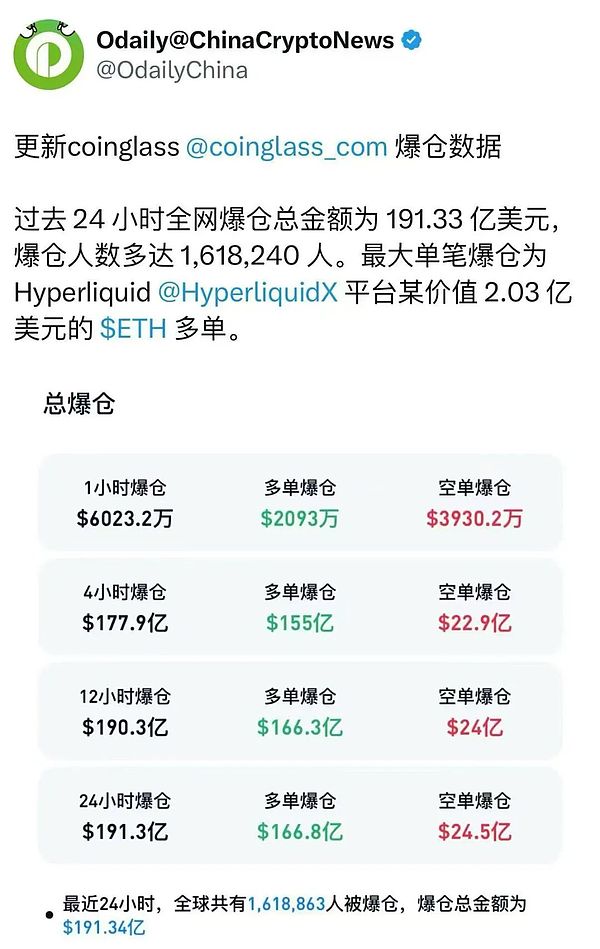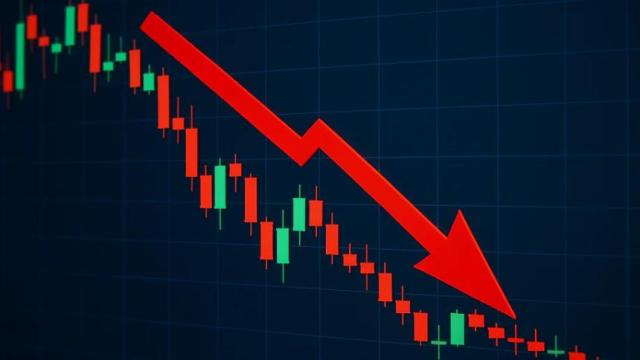Author: Martin
Early this morning, the crypto asset market experienced a rare and violent shock, resulting in a large number of contract positions being forcibly liquidated by the system. Relevant statistics show that the total amount of forced liquidation in the past 24 hours has reached an unprecedented scale.
According to the latest statistics released by professional data tracking agency @coinglass_com, the global crypto asset derivatives market has experienced severe fluctuations in the past 24 hours, resulting in a large number of highly leveraged contract positions being forced to close by trading platforms .

Data shows that the total amount of forced liquidation across the entire network caused by this market volatility reached US$19.133 billion, setting a new single-day record in this field. At the same time, the number of users who encountered forced liquidation also reached a staggering 1,618,240 , reflecting the wide range of this volatility.
One particularly notable case occurred on the derivatives trading platform Hyperliquid (@HyperliquidX). The platform recorded a forced liquidation of a long contract position in Ethereum ($ETH), totaling $203 million . This massive single loss highlights the significant risks inherent in high-leverage trading during extreme market volatility.
Market volatility analysis:
Market analysts generally believe the recent sharp market fluctuations are due to a combination of factors, including but not limited to: shifts in macroeconomic expectations (such as the direction of Federal Reserve policy), which impacted overall market risk appetite; significant short-term gains in some mainstream crypto assets, which necessitated a technical correction ; and tight market liquidity during a specific period . These factors combined to trigger a massive sell-off and contract liquidation.
The cryptoasset market is known for its high volatility. This record-breaking forced liquidation event represents a concentrated release of inherent market risks, reminding us that while pursuing potential returns, risk management must be prioritized. Investors should continue to learn, enhance their understanding, view market fluctuations rationally, and carefully allocate assets to navigate a market fraught with uncertainty.







